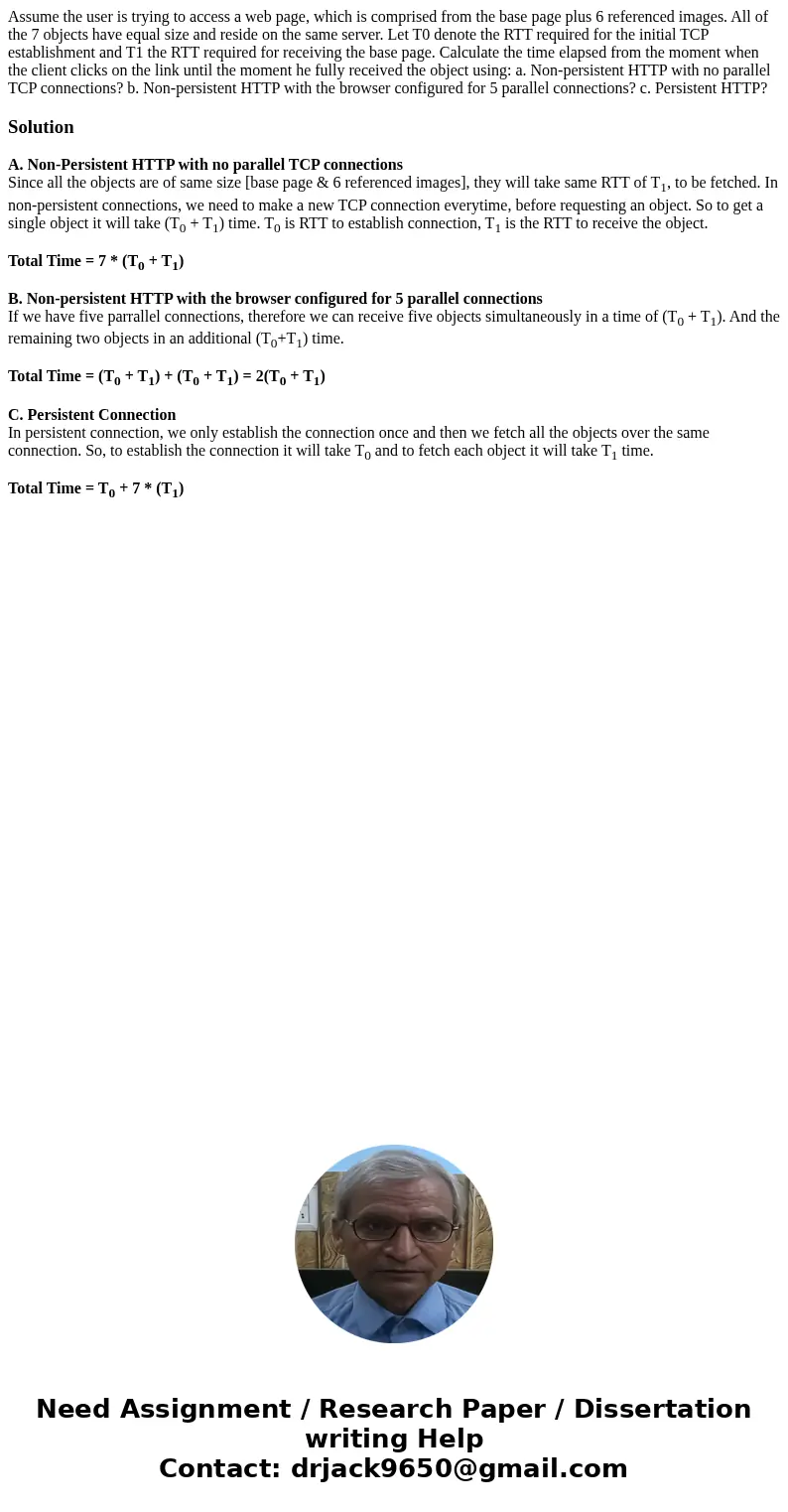Assume the user is trying to access a web page which is comp
Assume the user is trying to access a web page, which is comprised from the base page plus 6 referenced images. All of the 7 objects have equal size and reside on the same server. Let T0 denote the RTT required for the initial TCP establishment and T1 the RTT required for receiving the base page. Calculate the time elapsed from the moment when the client clicks on the link until the moment he fully received the object using: a. Non-persistent HTTP with no parallel TCP connections? b. Non-persistent HTTP with the browser configured for 5 parallel connections? c. Persistent HTTP?
Solution
A. Non-Persistent HTTP with no parallel TCP connections
Since all the objects are of same size [base page & 6 referenced images], they will take same RTT of T1, to be fetched. In non-persistent connections, we need to make a new TCP connection everytime, before requesting an object. So to get a single object it will take (T0 + T1) time. T0 is RTT to establish connection, T1 is the RTT to receive the object.
Total Time = 7 * (T0 + T1)
B. Non-persistent HTTP with the browser configured for 5 parallel connections
If we have five parrallel connections, therefore we can receive five objects simultaneously in a time of (T0 + T1). And the remaining two objects in an additional (T0+T1) time.
Total Time = (T0 + T1) + (T0 + T1) = 2(T0 + T1)
C. Persistent Connection
In persistent connection, we only establish the connection once and then we fetch all the objects over the same connection. So, to establish the connection it will take T0 and to fetch each object it will take T1 time.
Total Time = T0 + 7 * (T1)

 Homework Sourse
Homework Sourse